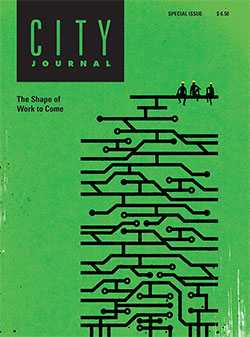Discussions on employment relationships in business, sports, the armed forces, and other odd places.
Wednesday, September 6, 2017
Brave New World of Sports Employment--Gamer Superstars
A 17 year-old video gamer who excels at a game called Overwatch was just signed to a player contract for a reported $150,000.
As a non-digital native, i.e., an old person, I was vaguely aware that there are such things as professional video gamers, and that some of them make money at it. Until recently, I was unaware that there was actually a professional Overwatch league, with, you know, teams and stuff. I suppose at some point, there will be uniforms, and cheerleaders, and over-priced food, as well.
But the lawyer in me looks at these situations and starts thinking about the implications. And there are some real legal issues here.
The first, and most obvious, is the Fair Labor Standards Act, which regulates child labor. And make no mistake, many if not most of these players, at least early on, will be underage minors. In fact, "sinatraa's" mother had to sign the contract with NRG because he was under age for legal competency. So these teams have to be aware that they are treading on dangerous ground, not just from the federal law, but state and local ordinances, as well.
The magic age for allowing children to work is 16 in non-hazardous occupations (and as young as 14 in limited circumstances) and 18 in hazardous occupations. Of particular note here is the FLSA exception that exempts children who are "performers" in motion picture or theatrical businesses. This provision is specific enough that it does not cover athletes, and I suspect that large-scale employment of children under the age of 16 in these kinds of gamer events is going to start raising some eyebrows (and lawsuits) quickly. In addition, these teams have to be cognizant of education issues - typically companies are not allowed to set work during school hours, or, must provide some type of make-up tutoring for their under age charges.
Moreover, a majority of states have child labor laws that piggyback on to the federal exemption, and in some cases go much further in protecting child employees.
That's for starters. There will be workers compensation claims--repetitive stress injuries are endemic to these gaming activities. And because the kid star is a kid, the clubs will be entering into arrangements with the guardians, parents or trustees of the child's estate, rather than the actual athlete. I'm thinking we'll see variations of the Coogan Law in California, where the compensation for the gamer's performance will be protected from the parents/guardians--what does that mean for incentives and other inducements?
A brave new world, indeed.
Employees Behaving Badly, Part 63
So, I guess not all nurses have the same protective atitude towards their patients as the nurse in Salt Lake City. Opening a body bag to check out some dead guy's privates ranks up there in the list of things we would not want to happen to us.
These Denver nurses are probably not long for their jobs after this. I'm guessing there will be a substantial patient and insurance blowback to the hospital.
These Denver nurses are probably not long for their jobs after this. I'm guessing there will be a substantial patient and insurance blowback to the hospital.
Tuesday, September 5, 2017
Nice Piece on the History of American Labor and Why It Matters Less Now
From City Journal. This is worth a read to explain the drop in US labor union participation rates, and why the NLRA is no longer the best vehicle to assist the American workforce.
Friday, September 1, 2017
Executive Action, Part 10--The EEO-1 Report
It seems that some form of sanity is starting to pervade the Federal executive branch, at least with respect to labor and employment law initiatives undertaken by the previous administration that were ill advised. The latest change relates to the ubiquitous EEO–1 form, which the EEOC requires of all employers with more than 100 employees, or federal government prime or first-tier contractors with 50 or more employees and a $50,000 contract. In a heavily criticized move, the Commission put in a new requirement mandating employers to submit their normal race, ethnicity and gender information, but now linked to W-2 wages and hours worked for all employees, grouped into 10 broad job categories that were then subdivided into 12 separate pay bands. The new requirements greatly increased the workload for employers and were challenged by numerous groups, including the US Chamber of Commerce, for their additional cost, limited utility, and potential for misuse.
Fortunately, yesterday the Office of Management and Budget indefinitely stayed the deadline for compliance with these new requirements. OMB noted that the data collected would not be grouped into meaningful categories, but rather would result in comparing employees in completely different jobs, who perform completely different tasks, requiring completely different skills. To cite an example that hits close to home, lawyers, doctors, accountants, nurses, and dietitians would all be grouped as "professionals," with their compensation data compared based on gender, race and ethnicity. Even the Commission noted that it did not expect that the data would identify specific, similarly situated comparators or that it would allow the Commission to establish pay discrimination as a legal matter. No wonder hundreds of employers were asking exactly why they were being forced to pull all this together.
For now, employers should plan to report the usual race, ethnicity and gender requirements within the EEOC job categories as they would normally. Those of us who are following these developments believe that, although the revised EEO-1 format is not dead, it's definitely on life support, and will likely not survive the pending appointment of a Republican majority on the OMB.
My thanks to Nick Haynes for his thoughts on this issue.
Subscribe to:
Posts (Atom)


